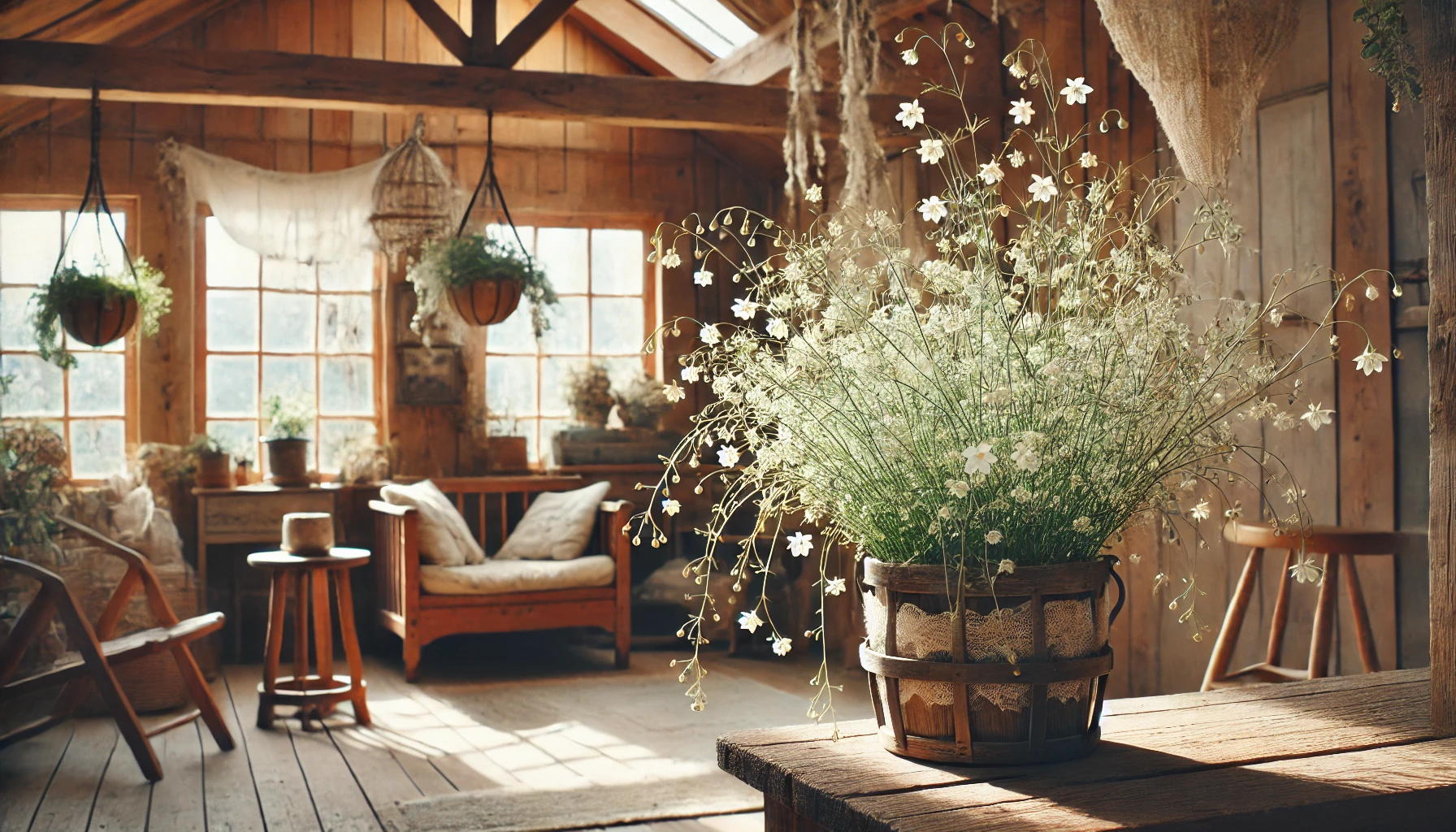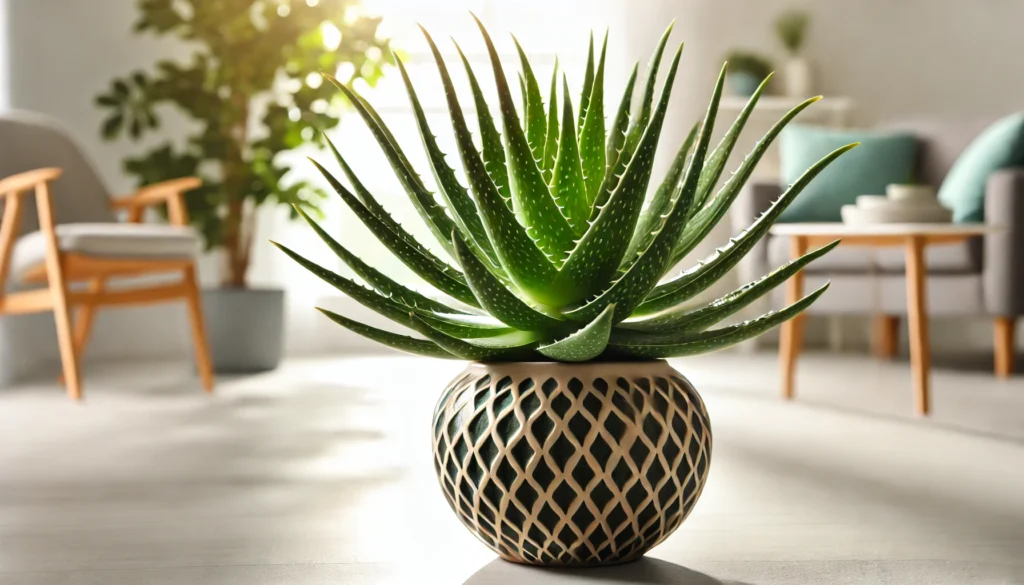
Bridal Veil, known scientifically as Gibasis geniculata, is a delicate and graceful plant that adds charm to any space. This perennial plant features cascading stems adorned with tiny white flowers and lush green foliage, creating an elegant “”veil”” effect. Under ideal conditions, the Bridal Veil can grow up to 18 inches (45 cm) in length, making it perfect for hanging baskets and decorative containers.
A Glimpse into History and Ideal Growing Conditions
Native to Central and South America, Bridal Veil has become a beloved ornamental plant due to its easy-care nature and attractive appearance. Its trailing habit makes it ideal for hanging planters, where it can cascade beautifully.
Ideal Growing Conditions
Bridal Veil thrives in a warm and humid environment, mirroring its tropical roots. It flourishes best in temperatures ranging from 65°F to 80°F (18°C to 27°C). While it can tolerate lower temperatures, it should not be exposed to anything below 50°F (10°C). The plant prefers bright, indirect light but can adapt to lower light conditions, though this may reduce flowering.
Is Bridal Veil Safe for Pets?
Bridal Veil is generally considered non-toxic to pets, making it a safe addition to homes with cats or dogs. However, it’s always wise to monitor pets around any plant to prevent potential stomach discomfort from excessive chewing.
Safe Alternative Plants
If you’re looking for other non-toxic plants, consider adding Spider Plants (Chlorophytum comosum) or Boston Ferns (Nephrolepis exaltata). These options are also pet-friendly and add a lush touch to your home.
Best Practices for Caring for Bridal Veil
Bridal Veil is easy to care for, provided it receives the right conditions and attention. Here are some key care practices to ensure your plant remains healthy and vibrant.
Watering and Humidity
Bridal Veil prefers slightly moist soil but doesn’t tolerate waterlogged conditions. Water your plant when the top inch (2.5 cm) of soil feels dry to the touch. During hotter months, you may need to water more frequently, while in cooler seasons, water less often. High humidity benefits this plant, so consider using a humidifier or placing a tray of water nearby to increase moisture in the air.
Soil, Light, and Temperature
Use well-draining potting soil for optimal growth. A blend of standard potting mix and perlite or sand works well to prevent soggy roots. Bright, indirect light is best for Bridal Veil, though it can adapt to medium light. Keep temperatures between 65°F and 80°F (18°C to 27°C). Avoid drafts and extreme temperature shifts, which can stress the plant.
Fertilizing
Bridal Veil benefits from regular feeding during its active growing season, typically spring through early fall. Use a balanced, water-soluble fertilizer every two to four weeks to promote lush growth and vibrant flowers. In the dormant season, reduce feeding to once every two months or stop altogether.
Common Problems and Remedies
Bridal Veil can encounter issues like yellowing leaves, wilting, or stunted growth. Here are some common problems and how to solve them:
- Yellowing Leaves: This can indicate overwatering. Allow the soil to dry more between waterings.
- Wilting Stems: Underwatering or low humidity may be the cause. Adjust your watering schedule or increase humidity.
- Pests: Aphids or spider mites may occasionally appear. Treat infestations with insecticidal soap or neem oil.
Pruning Bridal Veil: Tips and Techniques
Regular pruning helps maintain the plant’s shape and encourages healthy growth. The best season for pruning is early spring, before the active growing period.
Tools Needed
Use clean, sharp pruning shears or scissors. Always sanitize your tools before and after use to prevent the spread of disease. A simple solution of 70% isopropyl alcohol or a diluted bleach solution works well for sanitizing.
Identify Areas to Trim
Look for leggy stems or sections that are overcrowded. Trim up to one-third of the plant to maintain its cascading form. Cut just above a leaf node to encourage branching.
Deadheading
Remove any spent flowers to redirect the plant’s energy toward new growth. Gently snip off faded blooms with sanitized shears.
Prune Leggy Growth
If your Bridal Veil looks sparse or stretched out, prune leggy stems to encourage fuller, bushier growth. This will rejuvenate the plant and promote compact foliage.
Remove Damaged or Diseased Leaves
Cut away any yellowing or damaged leaves to prevent potential disease spread. This practice keeps the plant looking neat and healthy.
Shape the Plant
Shape the Bridal Veil by trimming stray stems that disrupt its natural flow. This enhances its visual appeal, especially in hanging displays.
Post-Pruning Care
After pruning, ensure your plant receives adequate light and water. This helps it recover quickly and stimulates new growth.
Propagation and Benefits
Bridal Veil can be easily propagated through stem cuttings. Simply take a 4- to 6-inch (10-15 cm) cutting, remove the bottom leaves, and place it in water or moist soil until roots develop. Propagation allows you to expand your collection or share this lovely plant with friends.
This plant not only enhances the aesthetic of your home but also helps purify the air by filtering toxins and adding a touch of natural serenity.
Final Thoughts
Bridal Veil is a stunning, easy-to-care-for houseplant that brings elegance to any room. With the right care and attention, it will reward you with its cascading greenery and delicate white blooms. Whether you’re a beginner or an experienced plant enthusiast, this plant is a delightful addition to any collection.
Stay connected with the world of plants! Subscribe to Phylofy for expert gardening tips, DIY projects, and eco-friendly inspiration. Join our community and nurture your love for nature. Don’t miss exclusive content and updates. Subscribe now!



